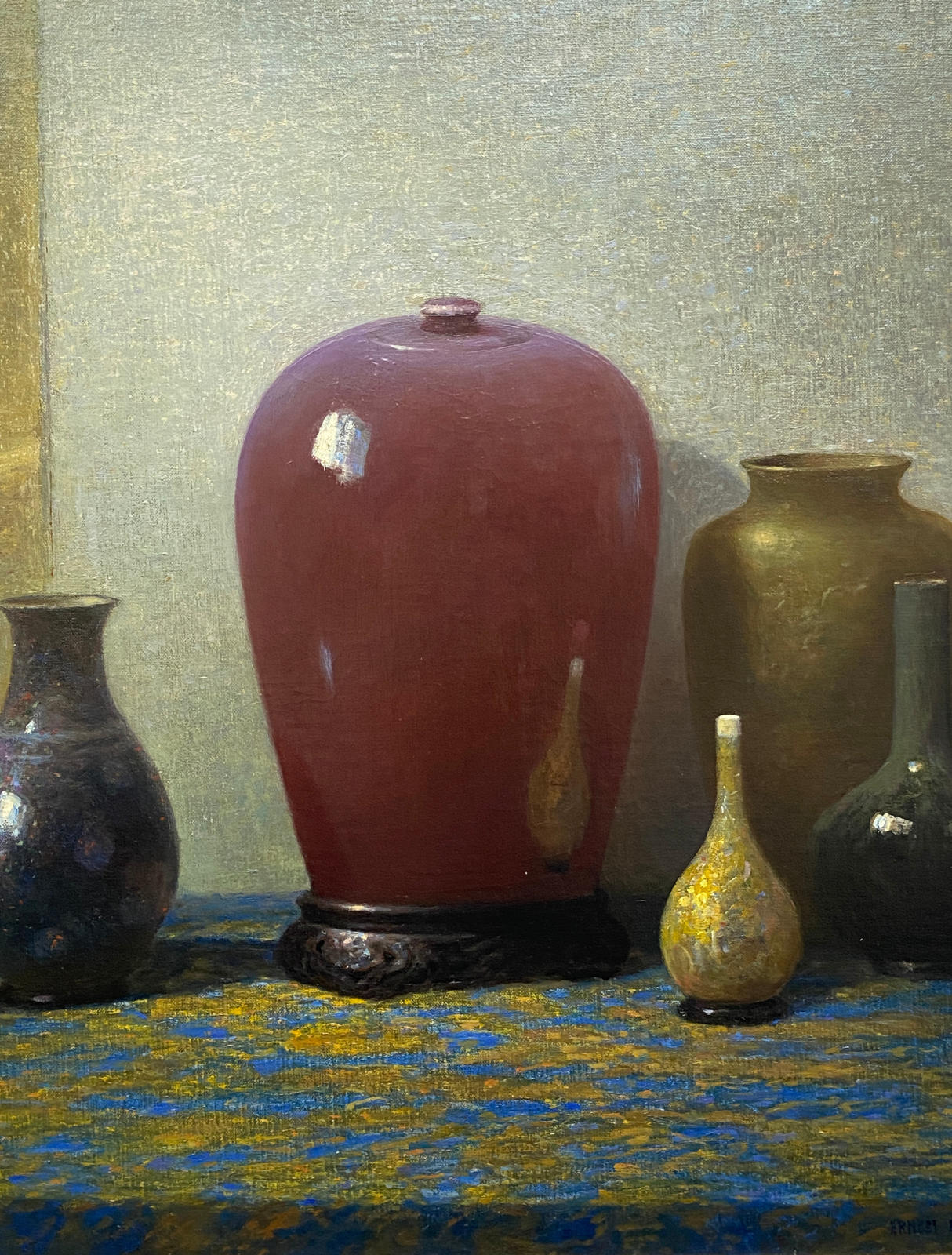








Framed: 35 1/2 x 41 1/2 inches
artist
Ernest Albert was an influential American Painter, scenic designer, and muralist. Best known for his achievements in theatrical set design and landscape painting, he began his career as a newspaper illustrator and a stage designer before making significant contributions to both American theater and visual art. Albert was a true Connecticut landscape artist, devoted to depicting the different seasons in an Impressionist manner. Albert was part of just a handful of painters, native to Connecticut, and making up a very small but important movement in American Impressionism. Influenced by Japonsim, he probably felt the lure to compliment his landscape work with still lifes that afforded him the chance to paint more tightly and show off his technical abilities.
Description
Ernest Albert was a true Connecticut landscape artist, devoted to depicting the different seasons in an Impressionist manner. Albert was part of just a handful of painters, native to Connecticut, and making up a very small but important movement in American Impressionism. In 1941 he had his last major one-man exhibition at Rockefeller Center in New York. It is around this time we believe he painted the still lifes which were so striking in presence and quality. Influenced by Japonsim, he probably felt the lure to compliment his landscape work with these still lifes that afforded him the chance to paint more tightly and show off his technical abilities. At this later date in his career, Albert most likely felt it soothing and fulfilling to sit and study these still lifes, like our Oriental Still Life Also. Albert had long been a part of the Connecticut school of artists and would have been highly familiar with Emil Carlsen’s still lifes which were highly regarded by anyone critical within artistic spheres. Albert’s still lifes are clearly influenced by Carlsen’s approach but Albert brings to his canvases more color and brilliance. Carlsen was a bit of a monochromatic painter and Albert, while often a sensitive and pastel oriented color user, also saw this as an opportunity to do richly jewel toned colors that existed in the pottery.
Often still life painting is about academically showing off and being able to capture what was before them in an impressive manner. It is evident though that Albert enjoyed doing these works and it comes through in the care and attention to every stroke which is expertly and patiently thought through.








